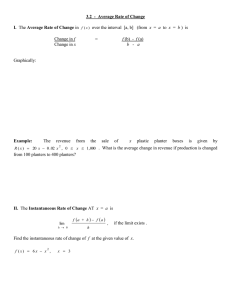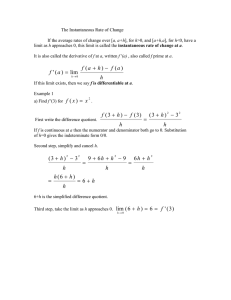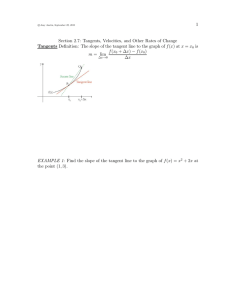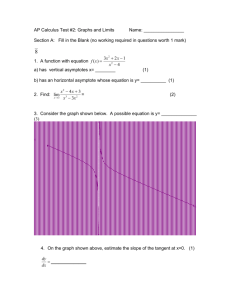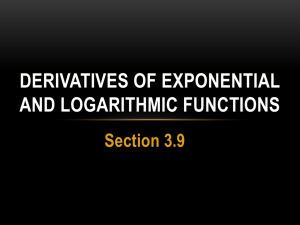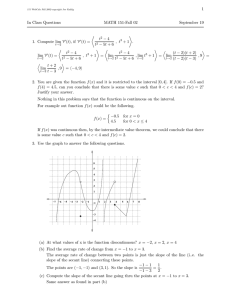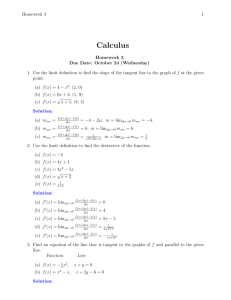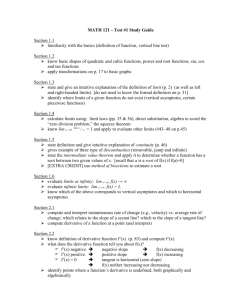AP CALCULUS FLASH CARDS
advertisement
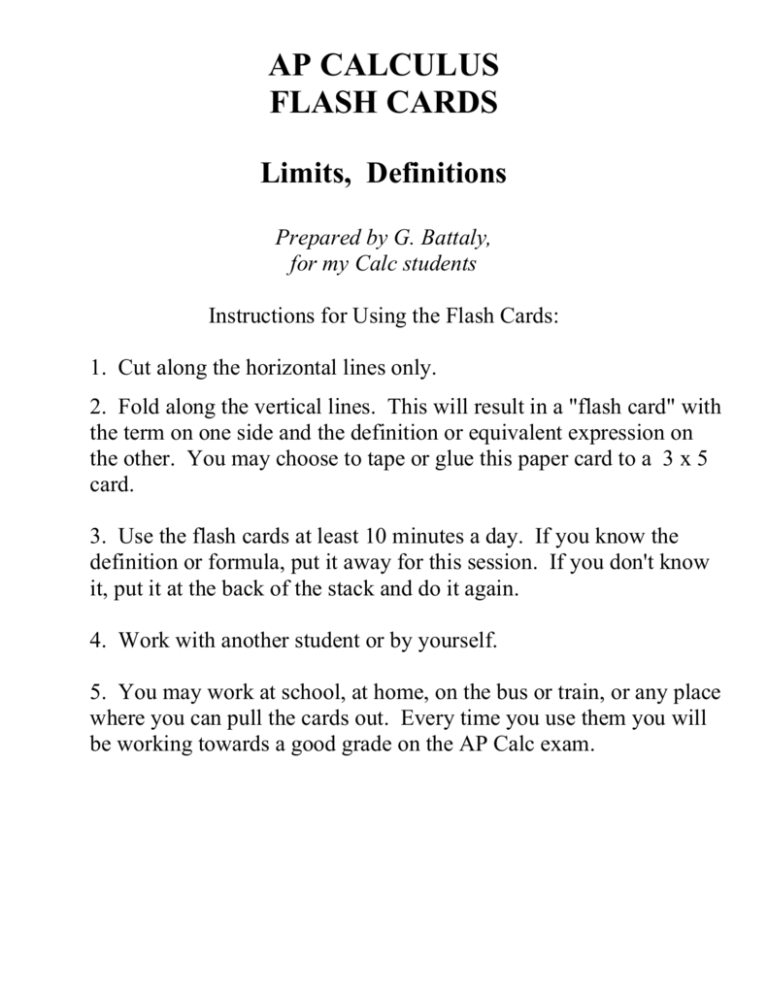
AP CALCULUS FLASH CARDS Limits, Definitions Prepared by G. Battaly, for my Calc students Instructions for Using the Flash Cards: 1. Cut along the horizontal lines only. 2. Fold along the vertical lines. This will result in a "flash card" with the term on one side and the definition or equivalent expression on the other. You may choose to tape or glue this paper card to a 3 x 5 card. 3. Use the flash cards at least 10 minutes a day. If you know the definition or formula, put it away for this session. If you don't know it, put it at the back of the stack and do it again. 4. Work with another student or by yourself. 5. You may work at school, at home, on the bus or train, or any place where you can pull the cards out. Every time you use them you will be working towards a good grade on the AP Calc exam. s (t ) = ∫ v(t ) dt position function s' (t ) = v(t ) = ∫ a (t ) dt velocity function s ' ' (t ) = v' (t ) = a (t ) acceleration function s(t1) −s(tc ) + s(tc ) −s(t2) total distance t1 to t2 where tc = time particle changes direction definition of definite integral n lim ∑ f (ci ) ∆xi x →∞ i =1 f(x) increasing f (x + ∆x) − f (x) lim ∆x→0 ∆x f '(x) > 0 Derivative of y = f(x) at (x,f(x)) Interpretations of f '(x): 1. slope of tangent line 2. instantaneous velocity 3. instantaneous rate of change Chain Rule Find f '(x) for composite function Given: f(x) = g[h(x)] Find: f ' (x) f '(x) = g ' [h(x)] ih '(x) slope of a curve at a point f ( x ) − f (c ) lim x →c x−c Rolle's Theorum slope of the line tangent to the curve at that point Derivative of y = f(x) at (c, f(c)) 1. f(x) continuous [a,b] 2. f(x) differentiable (a,b) 3. f(a)=f(b) Then ∃ c on (a,b) ∋ f ' (c) = 0 Mean Value Thoerem 1. f(x) continuous [a,b] 2. f(x) differentiable (a,b) Then ∃ c on (a,b) ∋ f ' (c ) = Extreme Value Theorem f (b) − f (a ) b−a If a function is continuous on a closed interval, then the function is guaranteed to have an absolute maximum and an absolute minimum in the interval. domain of domain of s (x) s(x) > 0 1 s( x) s(x) ≠ 0 domain of ln[s(x)] s(x) > 0 even function symmetry with respect to y-axis or f(-x) = f(x) odd function symmetry with respect to origin or f(-x) = -f(x) d [u ± v ] dx d [ uv ] dx u '± v ' uv ' ± vu ' u d v dx n d [u ] dx d[ln u] dx vu ' − uv ' 2 v n−1 nu u ' u' u u d [e ] dx u e u' d [sin u ] dx (cos u ) u ' d [cos u ] dx − (sin u ) u ' d [tan u ] dx (sec u ) u ' d [sec u ] dx (secu tanu)u' 2

